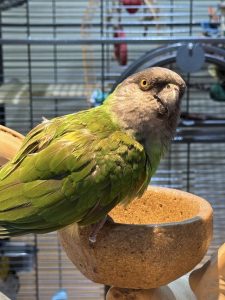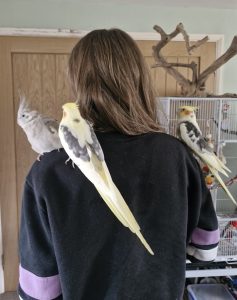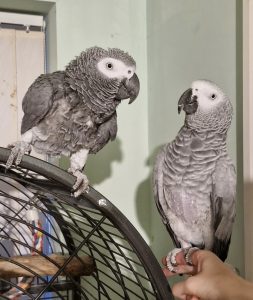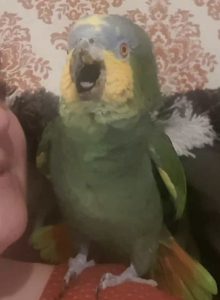
Macaw
Macaws are beautiful, brilliantly coloured members of the parrot family. Many macaws have vibrant plumage. The colouring is suited to life in Central and South American rain forests, with their green canopies and colourful fruits and flowers. The birds boast large, powerful beaks that easily crack nuts and seeds, while their dry, scaly tongues have a bone inside them that makes them an effective tool for tapping into fruits.
Macaws also have gripping toes that they use to latch onto branches and to grab, hold, and examine items. The birds sport graceful tails that are typically very long.
Further information
Macaws are playful and very active and have an energetic personality to go along with their size. This makes them a very challenging pet, they are very affectionate and loving birds and in turn require a vast amount of time, love and attention from there carers. These birds are very powerful and should not be taken on by an in experienced person.
Macaws are very clever and will quickly find ways to manipulate their owners with their big powerful beaks.
Macaws are noisy birds naturally. Their vocalisations are loud and they can screech extremely loudly! The use this massive voice to contact there flock and warn others of danger so with this in mind we give the macaw a 9 on our scale.
Macaws are very big parrots and should not be taken on by the inexperienced keepers. They have big strong beaks and learn quickly that they can control their owners by lunging/biting. Macaws are very playful and need a lot of space to play. They need lots of toys to keep their minds active and to keep their beaks busy. Macaws can learn to speak but are not noted as the best talkers.
Macaws breeding season is early spring into summer, although some pairs can breed all year round in the right environment. The female macaw will lay about 2 – 3 eggs.
Some of the more common illnesses seen in Macaws are Proventricular Dilation disease (Macaw wasting disease); Psittacosis (chlamydiosis or parrot fever); bacterial, viral, or fungal infections; feather picking (results of boredom, poor diet, sexual frustration, lack of bathing); allergies; chewing flight and tail feathers by juveniles, beak malformations in chicks; Papillomas; kidney disease (gout); toxicity, heavy metal poisoning; lipomas in older birds.
There are 17 species of macaws, and several are endangered. These playful birds are popular pets, and many are illegally trapped for that trade. The rain forest homes of many species are also disappearing at an alarming rate.
Macaws as most other parrots need a good quality seed and fresh fruit and veg daily. Macaws also need a higher quantity of fat than most parrots but be sure not to over feed them fatty foods. Macaws will readily accept “human food” but make sure you know what is toxic to your parrot.
More information
Read more about other parrot species
30+
years experience between our members
30+
years experience between our members
30+
years experience between our members
Our feathered friends
Looking for new homes
From loving tickles to lifelong friend












